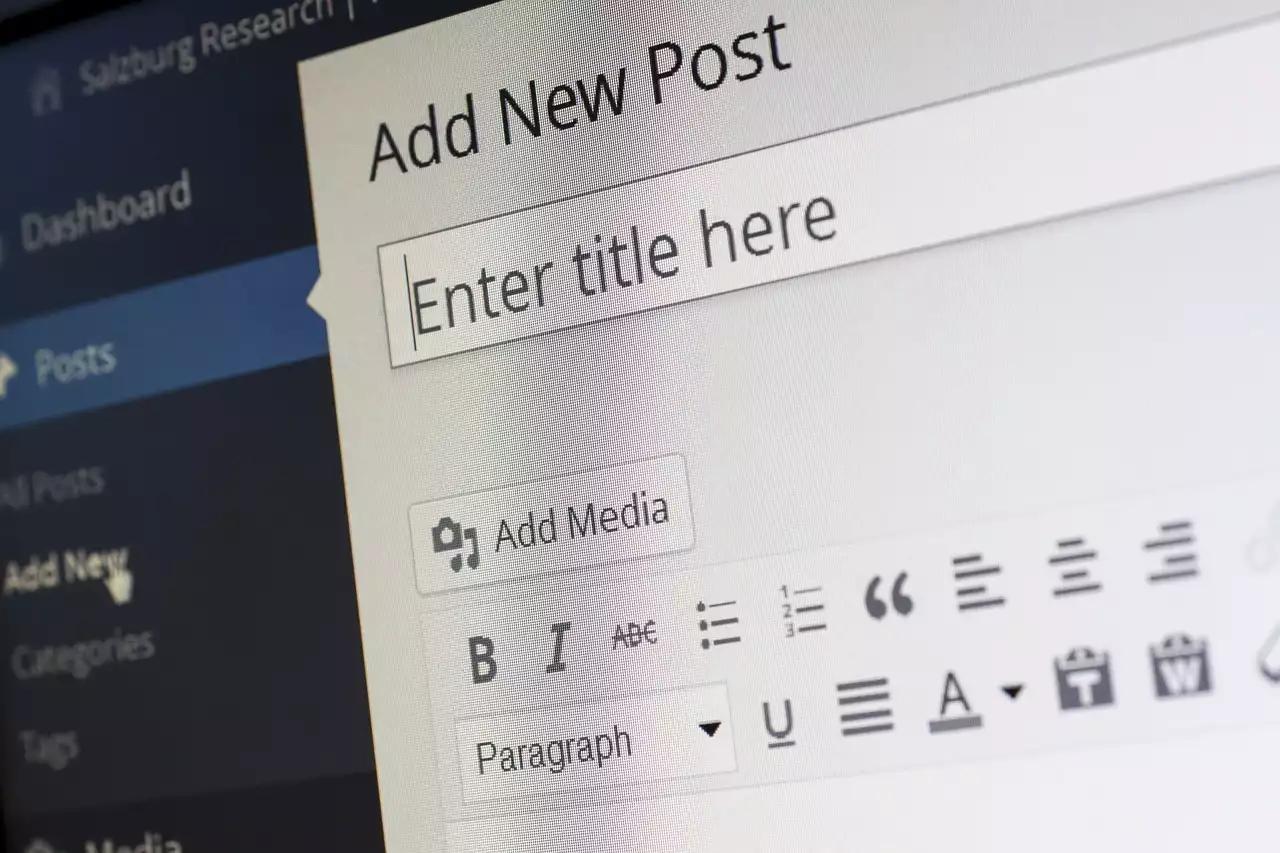What is a CMS?
A content management system (CMS) is a software application that enables users to create, manage, and publish digital content without the need for technical knowledge. CMS allows users to create and manage their digital content, including text, images, videos, and audio files. CMS platforms are designed to be user-friendly, and they eliminate the need for HTML/CSS coding, making it easier for users to create and publish content.
CMS platforms are designed to be modular, meaning that they can be customized to meet the needs of different users. The modular design of CMS platforms allows users to easily add or remove functionality as their needs change. CMS platforms are also designed to be scalable, which means that they can grow with your business. As your website traffic increases, your CMS platform can handle the increased load.
CMS platforms are available in two main types: open-source and proprietary. Open-source CMS platforms are free to use, and they are developed and supported by the community. Proprietary CMS platforms are developed and supported by a company, and they usually come with a price tag.
Benefits of using a CMS
Using a CMS has several benefits for website owners and content creators. Here are some of the benefits of using a CMS:
1. Easy to use
CMS platforms are designed to be user-friendly, making it easy for non-technical users to create, edit and publish content. With a CMS, you don't need to have technical knowledge to create and publish content online.
2. Saves time
CMS platforms allow users to create and manage content quickly and efficiently. With a CMS, you don't need to spend time coding or formatting content. Instead, you can focus on creating high-quality content.
3. Control over content
CMS platforms give users complete control over their digital content. Users can create, edit, and publish content on their terms. CMS platforms also allow users to manage access to their content, ensuring that only authorized users can edit or publish content.
4. SEO optimization
CMS platforms are designed to be SEO-friendly, making it easier for users to optimize their content for search engines. CMS platforms also allow users to add meta tags, alt tags, and other SEO elements to their content, making it easier for search engines to crawl and index their website.
5. Mobile-friendly
CMS platforms are designed to be mobile-friendly, ensuring that your website looks great on all devices. With more people accessing the internet on their mobile devices, having a mobile-friendly website is essential.
Popular CMS options
There are several CMS platforms available today, each with its own set of features and benefits. Here are some of the most popular CMS options:
1. WordPress
WordPress is the most popular CMS platform, powering over 40% of all websites on the internet. WordPress is an open-source platform that is easy to use and customize. WordPress offers thousands of themes and plugins, making it easy to create a unique website that meets your needs.
2. Joomla
Joomla is an open-source CMS platform that is designed for developers and advanced users. Joomla offers a wide range of features and customization options, making it ideal for creating complex websites.
3. Drupal
Drupal is an open-source CMS platform that is designed for large, complex websites. Drupal offers a wide range of features and customization options, making it ideal for creating enterprise-level websites.
4. Shopify
Shopify is a proprietary CMS platform that is designed for e-commerce websites. Shopify offers a wide range of features and customization options, making it easy to create and manage an online store.
5. Wix
Wix is a proprietary CMS platform that is designed for small businesses and individuals. Wix offers an easy-to-use drag-and-drop editor, making it easy to create a website without any coding knowledge.
Understanding the basic structure of a CMS
CMS platforms have a basic structure that is designed to be easy to use and navigate. Here are the basic components of a CMS:
1. Dashboard
The dashboard is the main page of the CMS platform. It provides an overview of your website, including the number of visitors, the number of pages, and the number of comments.
2. Content editor
The content editor is where you create and edit your website content. The content editor is usually a WYSIWYG (What You See Is What You Get) editor, which means that you can see what your content will look like before publishing it.
3. Media library
The media library is where you store your images, videos, and other media files. The media library makes it easy to manage your media files and add them to your website content.
4. Themes and templates
Themes and templates are pre-designed layouts that you can use to customize the look and feel of your website. CMS platforms offer a wide range of themes and templates to choose from.
5. Plugins and extensions
Plugins and extensions are add-ons that you can use to extend the functionality of your website. CMS platforms offer a wide range of plugins and extensions to choose from.
Key features of a CMS
CMS platforms offer a wide range of features to help users create and manage their digital content. Here are some of the key features of a CMS:
1. User management
CMS platforms allow users to manage access to their website content. Users can create different user roles and assign permissions, ensuring that only authorized users can edit or publish content.
2. SEO optimization
CMS platforms are designed to be SEO-friendly, making it easy to optimize your content for search engines. CMS platforms allow users to add meta tags, alt tags, and other SEO elements to their content, making it easier for search engines to crawl and index their website.
3. E-commerce functionality
CMS platforms offer e-commerce functionality, making it easy to create and manage an online store. E-commerce functionality includes features such as product listings, shopping carts, and payment processing.
4. Multilingual support
CMS platforms offer multilingual support, making it easy to create and manage websites in multiple languages.
5. Analytics and reporting
CMS platforms offer analytics and reporting tools, making it easy to track website traffic, visitor behavior, and other metrics.
How to choose the right CMS for your website
Choosing the right CMS for your website is crucial to creating a successful digital presence. Here are some factors to consider when choosing a CMS:
1. Ease of use
Choose a CMS that is easy to use and navigate. Look for a CMS with a user-friendly interface and intuitive content editor.
2. Scalability
Choose a CMS that can grow with your business. Look for a CMS that is scalable and can handle increased website traffic and content.
3. Customization options
Choose a CMS that offers a wide range of customization options. Look for a CMS with a wide range of themes, templates, and plugins to choose from.
4. Support and community
Choose a CMS with a strong support and community network. Look for a CMS with active forums, documentation, and support resources.
5. Cost
Choose a CMS that fits your budget. Consider the cost of the CMS platform, hosting, and any plugins or extensions you may need.
Setting up your CMS
Setting up your CMS is a straightforward process. Here are the basic steps to setting up your CMS:
1. Choose a hosting provider
Choose a hosting provider that is compatible with your CMS platform. Look for a hosting provider that offers reliable uptime, fast loading speeds, and excellent customer support.
2. Install your CMS
Install your CMS platform on your hosting provider's server. Most hosting providers offer one-click installation for popular CMS platforms.
3. Choose a theme or template
Choose a theme or template that fits your website's needs. Look for a theme or template that is responsive, SEO-friendly, and easy to customize.
4. Install plugins and extensions
Install plugins and extensions to add functionality to your website. Look for plugins and extensions that are well-reviewed and regularly updated.
5. Create and publish content
Create and publish content on your website using the content editor. Make sure to optimize your content for SEO and mobile devices.
Tips for using a CMS effectively
Here are some tips for using a CMS effectively:
1. Keep your website updated
Regularly update your website with fresh content and security patches. This will help improve your website's SEO and protect it from security threats.
2. Use plugins and extensions sparingly
Use only the plugins and extensions that you need. Too many plugins and extensions can slow down your website and make it more vulnerable to security threats.
3. Optimize your content for SEO
Optimize your content for search engines by using relevant keywords, meta tags, and alt tags. This will help improve your website's visibility in search engine results.
4. Use a responsive theme or template
Use a responsive theme or template that looks great on all devices. This will help improve your website's user experience and SEO.
5. Backup your website regularly
Regularly backup your website to protect against data loss and security threats.
Common mistakes to avoid when using a CMS
Here are some common mistakes to avoid when using a CMS:
1. Not updating your website regularly
Failing to update your website regularly can lead to security vulnerabilities and hurt your SEO.
2. Using too many plugins and extensions
Using too many plugins and extensions can slow down your website and make it more vulnerable to security threats.
3. Ignoring SEO optimization
Ignoring SEO optimization can hurt your website's visibility in search engine results.
4. Not using a responsive theme or template
Not using a responsive theme or template can hurt your website's user experience and SEO.
5. Not backing up your website regularly
Failing to backup your website regularly can lead to data loss and security vulnerabilities.
CMS platforms are powerful tools that simplify the process of creating and managing digital content. With a CMS, you don't need to have technical knowledge to create and publish content online. CMS platforms offer a wide range of features and benefits, making them essential for creating a successful digital presence. When choosing a CMS, consider factors such as ease of use, scalability, customization options, support and community, and cost. By following best practices and avoiding common mistakes, you can use a CMS effectively to achieve your online goals.









